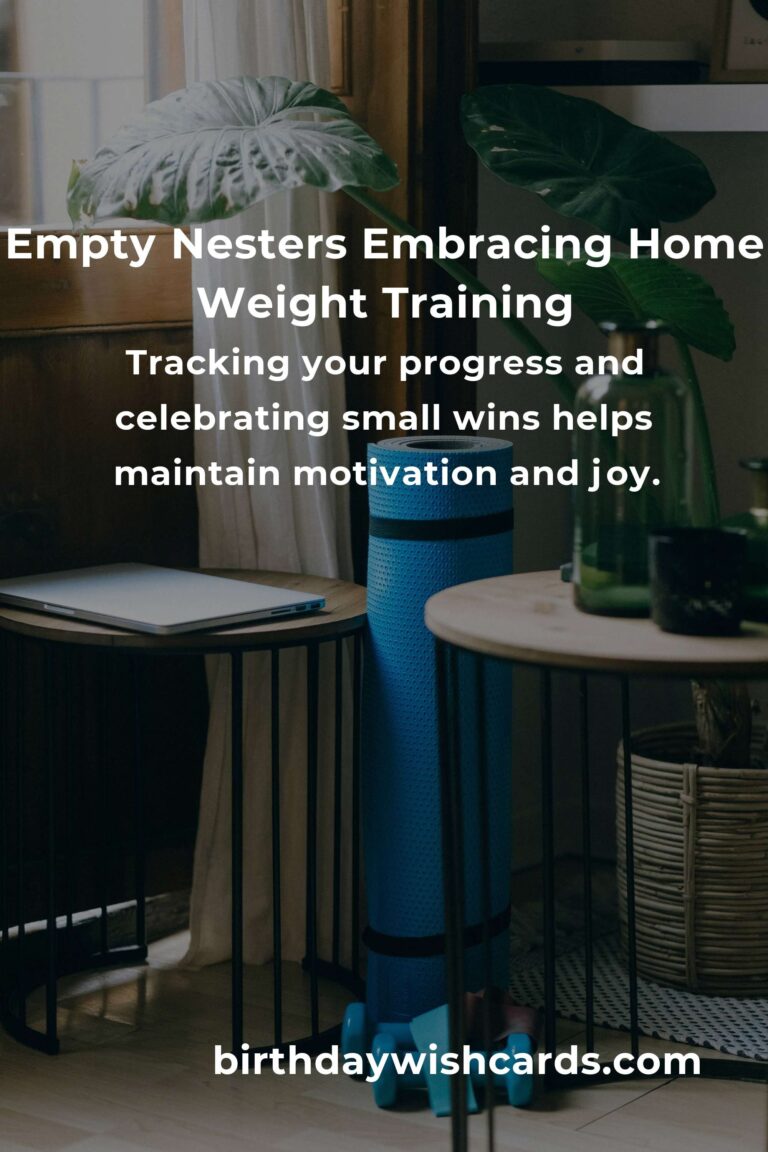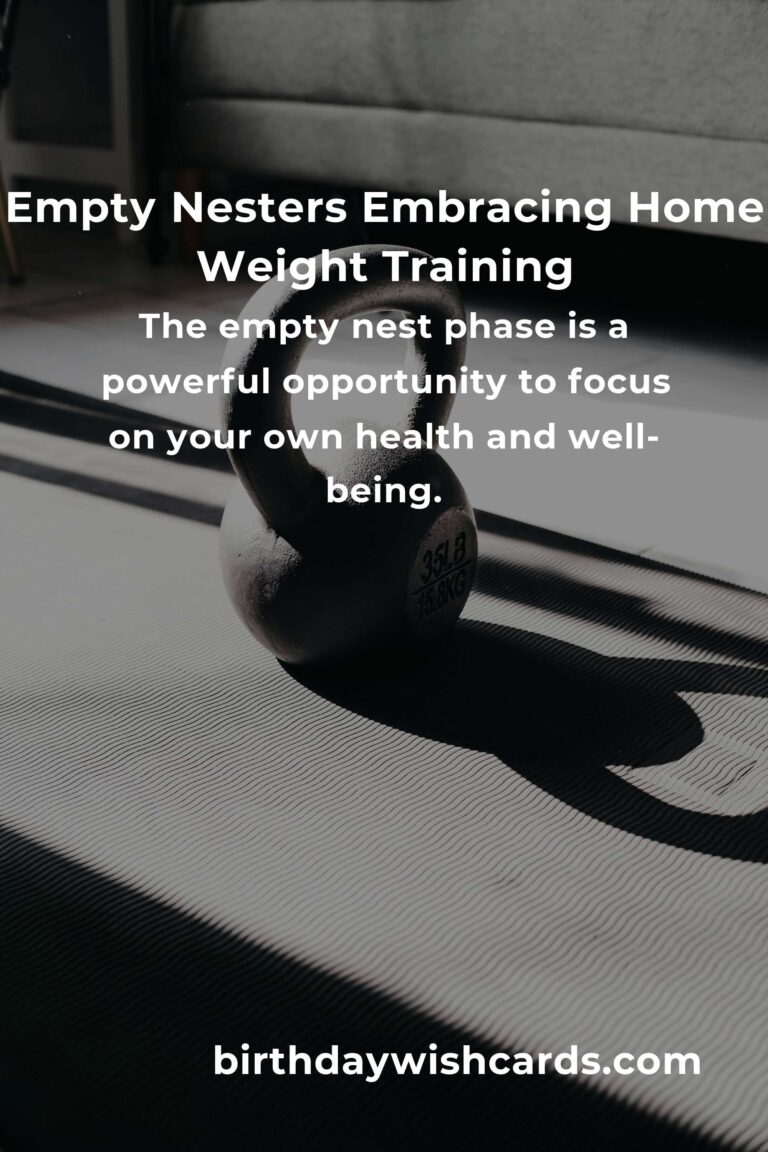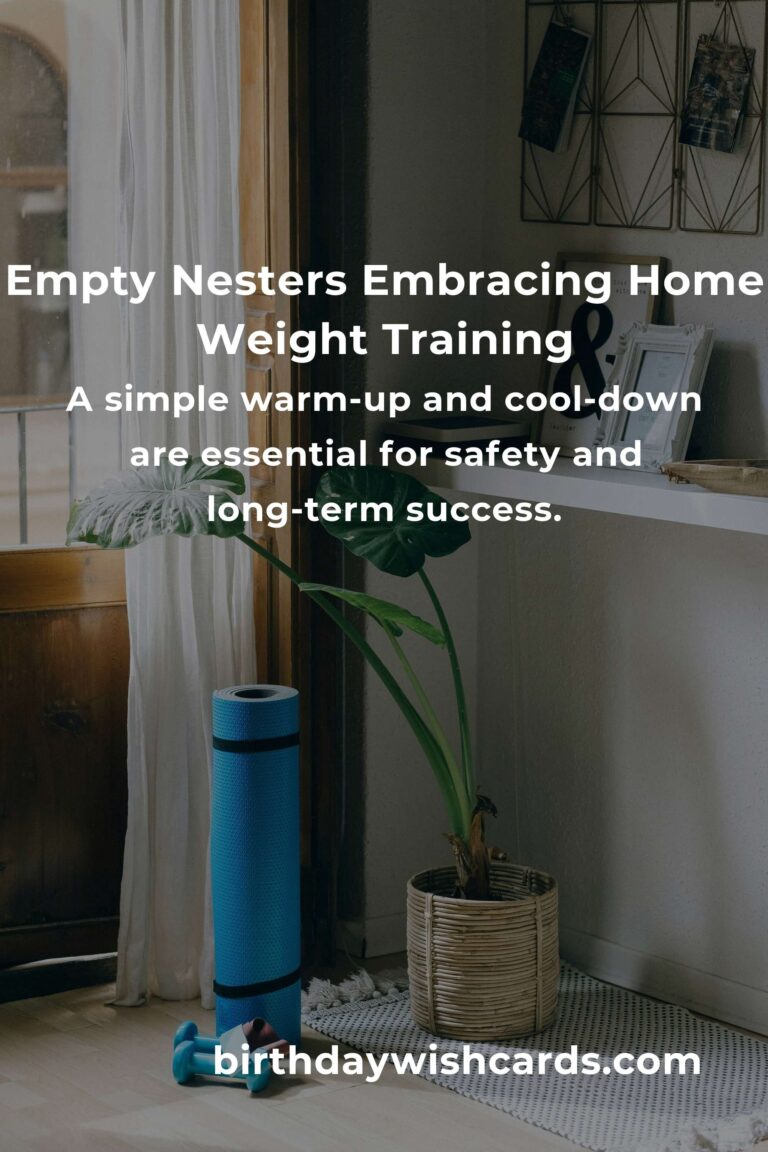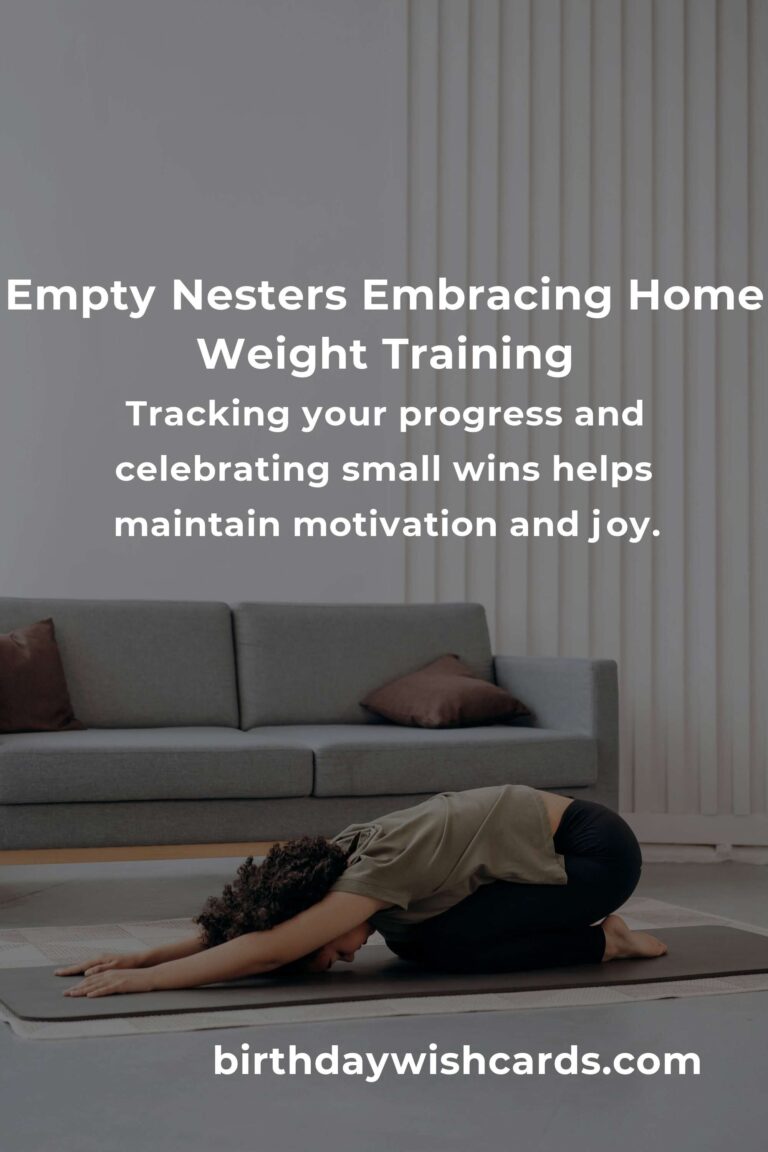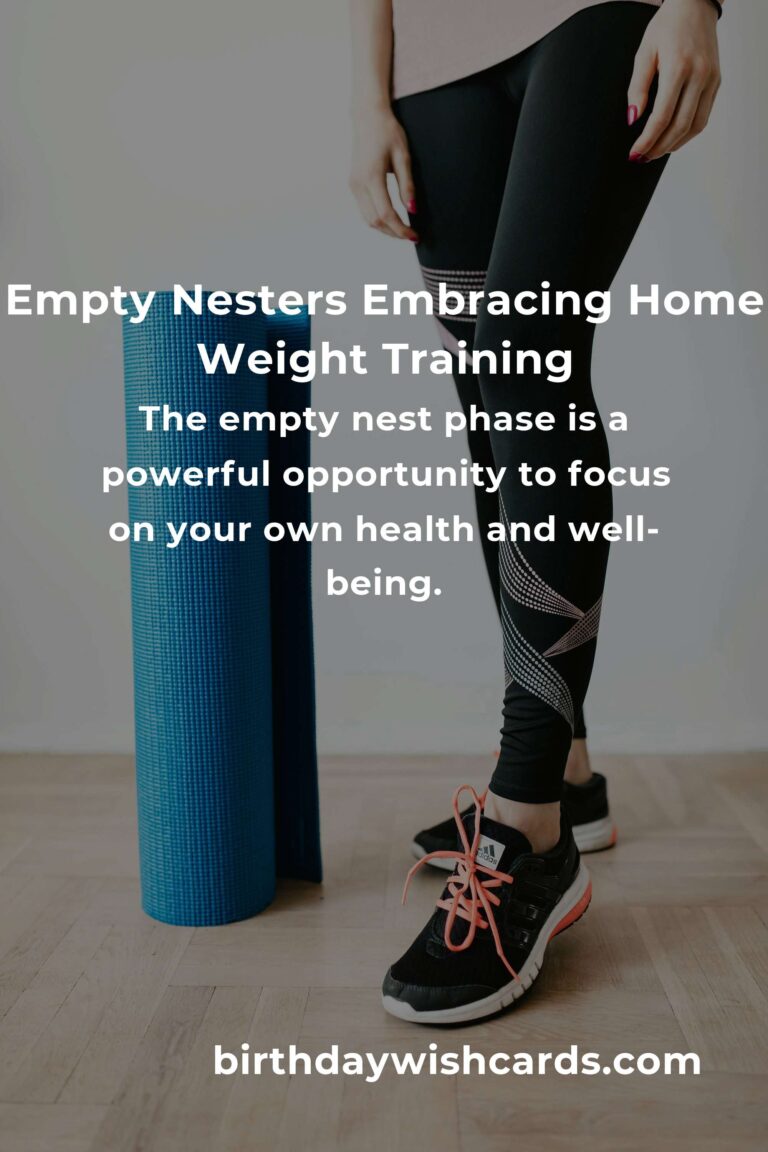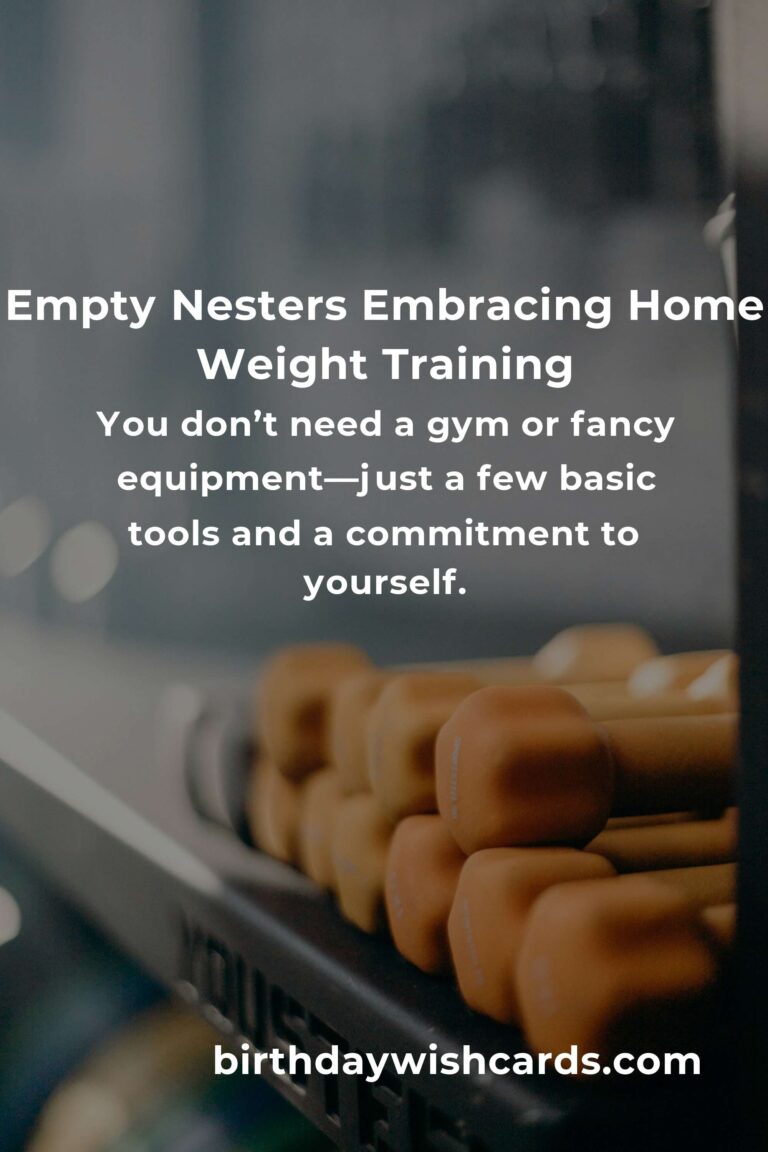
There is a particular freedom, and sometimes a profound sense of change, that comes with the empty nest phase of life. Your children have grown, spread their wings, and you find yourself with more time, space, and energy than you’ve had in years. It’s the perfect moment to focus on yourself—and what better way than with a home weight training routine built specifically for empty nesters?
The Emotional Power of Movement: Why Weight Training Matters Now
For many, the transition into an empty nest brings mixed emotions—pride, nostalgia, and sometimes a sense of loss or uncertainty about what comes next. Weight training isn’t just about building muscle or burning calories; it’s about reclaiming your body, your health, and your sense of purpose. It offers structure, measurable progress, and the empowering feeling of doing something just for you. Plus, it’s a fantastic way to boost your mood, support bone health, and maintain independence as you age.
Understanding Your Unique Needs: Training in Your 50s and Beyond
As we age, our bodies change. We may experience slower metabolism, reduced bone density, and a natural loss of muscle mass (sarcopenia). However, research shows that resistance training is a powerful antidote, helping to maintain or even build muscle, improve balance, and protect your joints. The key is to train smart—choosing exercises that suit your body, focusing on proper form, and allowing adequate recovery time.
Home Weight Training: Convenience Meets Consistency
One of the biggest advantages of being an empty nester is the newfound freedom in your schedule—and perhaps a spare room or two! Home weight training removes the barriers of gym commutes, crowds, or self-consciousness. You control the music, the pace, and the routine, making it easier to stick with your goals and truly enjoy the process.
Getting Started: Setting Up Your Home Gym
You don’t need fancy equipment to see results. Here’s what you’ll need to begin:
- Dumbbells: A light and a medium set (e.g., 5-8 lbs, 10-15 lbs)
- Resistance Bands: Great for variety and joint-friendly resistance
- Sturdy Chair or Bench: For support during certain exercises
- Yoga Mat: For comfort during floor exercises and stretches
- Optional: Stability ball, kettlebell, or adjustable dumbbells
Warm-Up: Preparing Body and Mind
Every effective workout starts with a warm-up. This gets your blood flowing, prepares your joints, and reduces the risk of injury. Try this 5-minute routine:
- March in place or walk briskly around the room (1 min)
- Arm circles and shoulder rolls (1 min)
- Gentle torso twists (1 min)
- Bodyweight squats (1 min)
- Cat-cow stretches on all fours (1 min)
The Ultimate Home Weight Training Routine for Empty Nesters
This full-body routine is designed to be performed 2-3 times per week, with at least one day of rest in between. Start with one set of each exercise and gradually work up to 2-3 sets as you become more comfortable. Rest 30-60 seconds between sets.
1. Goblet Squat
Muscles worked: Legs, glutes, core
How to do it: Hold a dumbbell or kettlebell at chest height. Stand with feet hip-width apart. Lower your body by bending your knees and pushing your hips back, keeping your chest tall. Pause, then push through your heels to stand. Do 10-15 reps.
2. Seated Shoulder Press
Muscles worked: Shoulders, upper back
How to do it: Sit on a chair with a dumbbell in each hand, elbows bent at 90 degrees. Press weights overhead until arms are straight, then lower back to start. Do 10-12 reps.
3. Bent-Over Row
Muscles worked: Back, biceps
How to do it: Stand with knees slightly bent, hinge forward at the hips, and hold a dumbbell in each hand. Pull weights toward your hips, squeezing shoulder blades together, then lower. Do 10-12 reps.
4. Step-Up
Muscles worked: Legs, glutes, balance
How to do it: Use a sturdy chair or bench. Step up with one foot, press through your heel, and bring the other foot up. Step back down and repeat on the other side. Do 10 reps per leg.
5. Chest Press (Floor or Bench)
Muscles worked: Chest, shoulders, triceps
How to do it: Lie on your back (on a mat or bench) with a dumbbell in each hand, elbows bent. Press weights up until arms are straight, then lower. Do 10-12 reps.
6. Banded Pull-Apart
Muscles worked: Upper back, shoulders, posture
How to do it: Hold a resistance band at chest height with both hands. Keep arms straight and pull the band apart, squeezing shoulder blades together. Do 12-15 reps.
7. Standing Calf Raise
Muscles worked: Calves, ankle stability
How to do it: Stand tall with feet hip-width apart. Rise onto the balls of your feet, pause, then lower. Do 15-20 reps.
8. Bird-Dog
Muscles worked: Core, balance, lower back
How to do it: Start on all fours. Extend opposite arm and leg, hold briefly, then return to start and switch sides. Do 10 reps per side.
Cool Down: The Gift of Flexibility and Recovery
Never skip your cool-down. Gentle stretching aids recovery and helps maintain flexibility. Focus on hamstrings, quads, chest, shoulders, and back. Hold each stretch for 20-30 seconds while breathing deeply. This is your time to thank your body for all it’s accomplished.
Progressing Safely: Listen to Your Body
As you gain strength and confidence, you can increase the weight, add more sets, or try new variations. However, always listen to your body. If you feel pain (not to be confused with normal muscle fatigue), stop and reassess your technique. Don’t hesitate to consult a physical therapist or certified trainer for personalized guidance.
Making It Your Own: Tips for Motivation and Consistency
- Create a routine: Schedule workouts like appointments—this is your time.
- Celebrate small wins: Notice improvements in strength, balance, or energy.
- Track your progress: Keep a simple log of your workouts and how you feel.
- Find a workout buddy: Partner with your spouse, a friend, or even join a virtual class.
- Mix it up: Add music, try new exercises, or alternate routines to keep things fresh.
- Remember your “why”: Whether it’s playing with grandkids or traveling, keep your deeper motivation in mind.
Addressing Common Concerns: You’re Not “Too Old”
It’s natural to worry about injuries or feel that weight training is a young person’s game. The truth is, it’s never too late to benefit from strength training. Numerous studies have shown that people in their 50s, 60s, and beyond can improve muscle mass, bone density, and overall vitality with regular resistance exercise. The secret is to start where you are and progress at your own pace.
The Deeper Benefits: Beyond Muscles and Bones
Weight training for empty nesters isn’t just about physical health. It’s about rediscovering your independence and confidence. It can help manage stress, improve sleep, sharpen your mind, and even foster new social connections. You may find yourself feeling more energetic, capable, and excited about this next chapter of life.
Sample Weekly Schedule
Here’s a sample week to get you started:
- Monday: Weight training routine + short walk
- Tuesday: Gentle yoga or stretching
- Wednesday: Weight training routine
- Thursday: Rest or light activity (gardening, light cycling)
- Friday: Weight training routine + fun activity (dancing, pickleball, etc.)
- Saturday/Sunday: Rest, hike, or enjoy active hobbies
Personalizing Your Journey: When to Seek Extra Help
If you have health concerns, recent injuries, or chronic conditions, it’s wise to consult your doctor before starting any new exercise routine. A physical therapist or certified personal trainer can help tailor exercises to your specific needs, ensuring safety and maximizing results.
Stories of Strength: Real-Life Inspiration
Countless empty nesters have transformed their lives by embracing weight training at home. Some have discovered a passion for fitness they never knew they had. Others have found that strength training helped them manage weight, control blood sugar, or simply feel more vital and alive. Their stories are a testament to the power of starting—no matter your age or experience level.
Conclusion: Embrace Your New Chapter with Strength
The empty nest is not an ending but a new beginning. It’s your time to rediscover yourself, cultivate new interests, and invest in your health and happiness. A home weight training routine is a simple yet powerful way to honor your body, boost your confidence, and make the most of this exciting chapter. Start small, stay consistent, and celebrate every step forward. Your best, strongest years can be ahead of you—embrace them with open arms and a strong, resilient heart.
The empty nest phase is a powerful opportunity to focus on your own health and well-being.
Home weight training offers both physical and emotional benefits, helping to boost confidence and foster independence.
You don’t need a gym or fancy equipment—just a few basic tools and a commitment to yourself.
Starting a regular routine can increase strength, balance, and bone health, all of which are vital as you age.
A simple warm-up and cool-down are essential for safety and long-term success.
Progress at your own pace, and never feel that it’s too late to start building strength.
Tracking your progress and celebrating small wins helps maintain motivation and joy.
Weight training can improve sleep, mood, and even your social life as you connect with others on a similar journey.
Always listen to your body and seek professional guidance if you have special health considerations.
Embracing strength training is a chance to rediscover your confidence and embrace this new chapter of life.
#EmptyNestStrong #HomeFitnessJourney #StrengthAtAnyAge #RediscoverYourself #HealthyAging #HomeWorkout #WeightTraining #ActiveLifestyle #NewBeginnings #EmpoweredLiving




